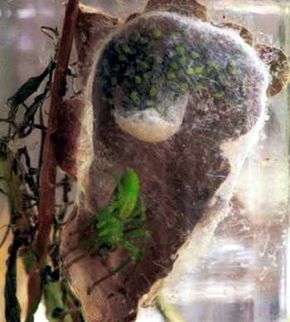The Spider Egg Sac
Once a spider's eggs are fertilized, they have to stay safe from predators until the spiderlings can hatch out. As we saw earlier, some spider species will encase their eggs in a silken pouch and abandon them, and others will stay with them until the babies hatch. Many wolf spider species carry their hatched spiderlings around on their back until the spiders are mature enough to take care of themselves.

The spiderlings continue molting, growing larger until they reach sexual maturity. Then the entire cycle begins again -- males seek out females, and females lay eggs. Most spiders have a fairly short lifespan, ranging from a few months to a couple of years. But some spiders, such as various female tarantulas, can live as long as 20 years. These spiders lay eggs many times throughout their life, and they molt annually, mainly to replace damaged body parts.
Advertisement
For much more information about spiders and other interesting animals, check out the links below.
